.webp?2025-12-17T15:00:29.367Z)
Spotify Wrapped ideas make stats lovable
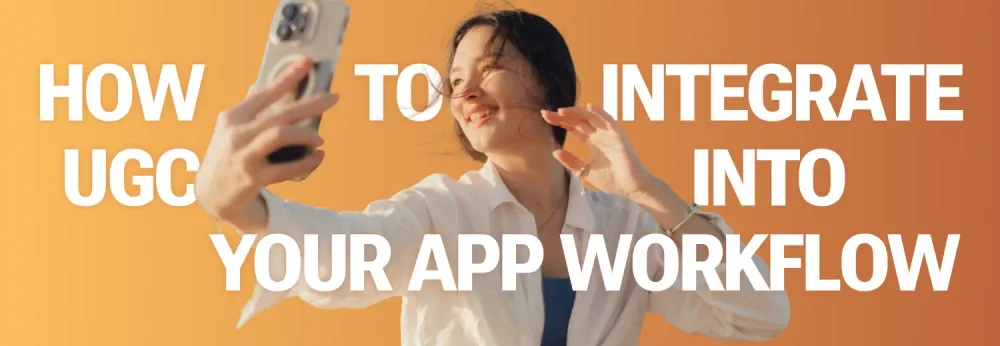
How to Integrate UGC Into Your App Workflow in 2025
Karina
Author @ InAppStory
UGC starts with people, not features. When this material is curated well, it turns into proof that helps someone decide faster because the right clip or quote is placed next to the action.
Ads are often avoided on streaming, so attention must be earned in other ways, as Nielsen reports. Word of mouth is still trusted more than ads, and recommendations from people remain the most credible signal in purchase decisions.
What Counts as UGC in a Brand Workflow?
User-generated content is not limited to social posts. It is any material created by real people that can support decision-making when reused by a brand. In practice, this includes:
- Reviews — star ratings, short comments, feedback modules.
- Visuals — photos, short clips, tutorials made by users or creators.
- Poll results — aggregated opinions displayed back to the community.
- Testimonials — quotes or feedback republished inside the app.
When UGC enters a brand workflow, it is usually:
- Collected (from social feeds, in-app surveys, review forms).
- Curated (edited, tagged, moderated).
- Placed near a conversion point (product card, promotion, checkout).
How Do Organic and Paid UGC Differ?
UGC comes in two main forms. Both have a role, but they differ in cost, control, and reliability.
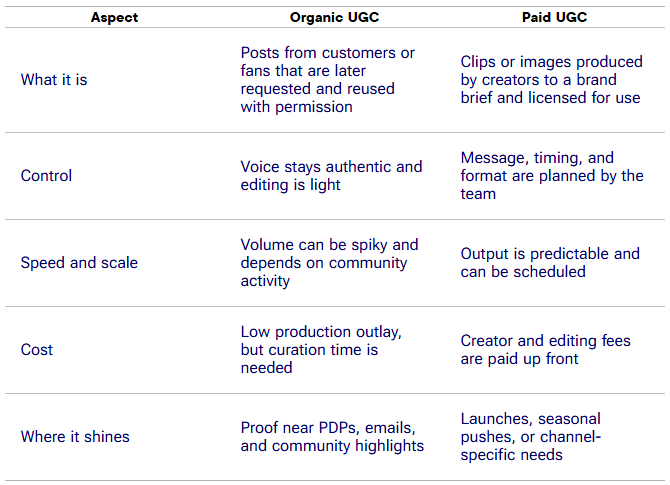
Organic UGC: authentic, unpredictable, often emotional. Works well for credibility.
Paid UGC: consistent, brand-safe, with licensed usage rights. Works best when campaigns require scale.
Where UGC Lives in Apps
User-generated content is usually associated with Instagram, TikTok, or YouTube. However, many of the same formats can be integrated directly into mobile apps, where they work closer to purchase decisions. This shift matters because attention is fragmented, and keeping proof “in-app” reduces the chance of losing a customer mid-journey.
Types of UGC That Work Inside Apps
This content can be shaped into clear, usable formats that support user journeys:
- Embedded influencer videos: short clips that illustrate product use, such as a 15-second demo of a lipstick shade or a quick outfit styling tip.
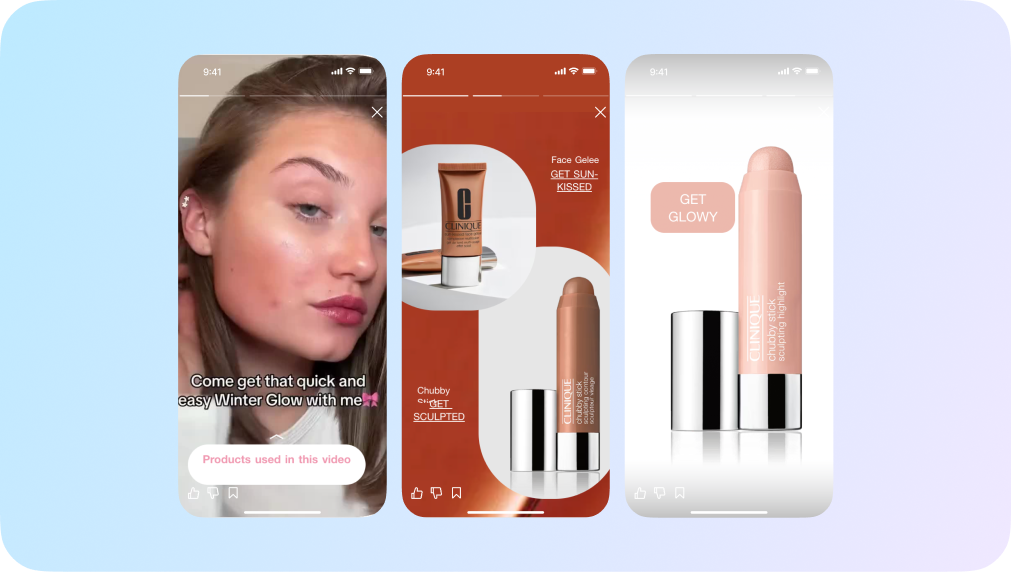
- Poll and quiz results: community answers shown back to users in visual form. For example, “62% of shoppers prefer the bronze shade.”
- Micro-reviews: brief ratings or snippets that appear on product cards, giving social proof without overwhelming detail.
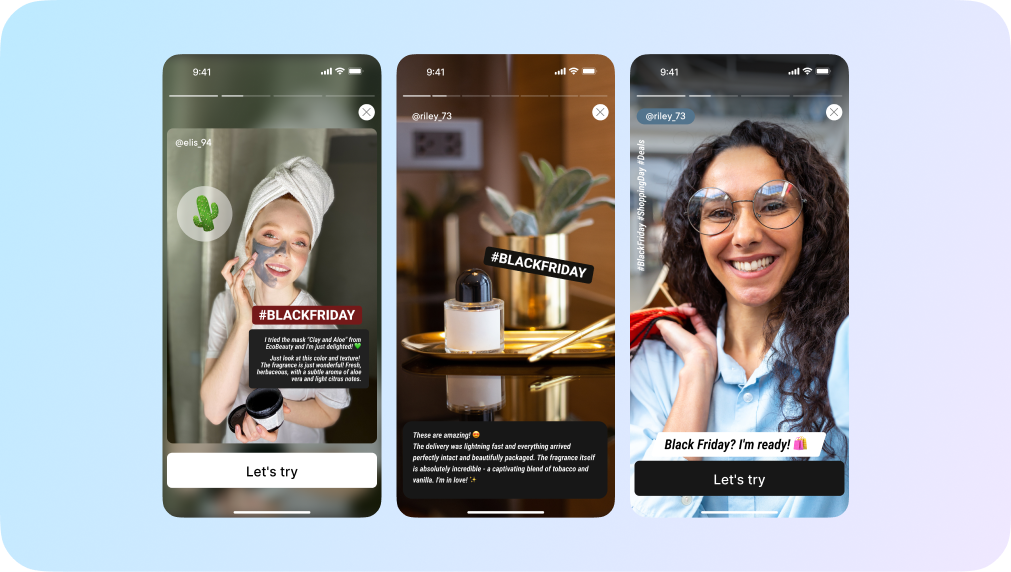
- Customer images or clips: curated submissions from contests or challenges, displayed in relevant categories.
- Community highlights: summaries like “Top picks this week” or “Most loved by users,” generated from real user activity.
Why Placement Matters
The same content takes on new weight when placed directly in a product journey.
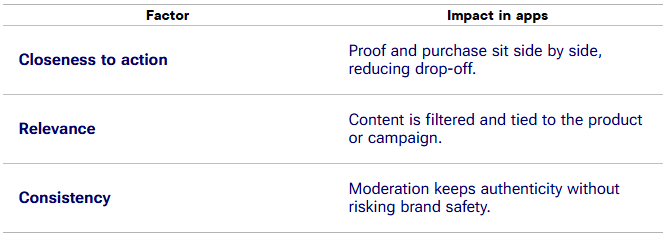
Different verticals adapt these principles to their own customer flows:
✅ E-commerce and retail use styling guides, ratings, and user videos to push discovery.
✅ Food delivery highlights favorite dishes via polls or photos from regular customers.
✅ Finance relies on feedback snippets or aggregated surveys to guide onboarding.
✅ Travel and hospitality turn guest highlights into seasonal galleries or trip inspiration.
How to Integrate UGC Into a Mobile App: Step-by-Step
Customer reviews and comments are valuable, but when published as static text blocks they rarely influence behavior inside an app. Mobile journeys are fast, and attention often drops before users scroll down to review sections. That is why the focus here is on interactive and curated formats of UGC that live naturally in app flows.
Instead of showing raw feeds, the steps below outline how to collect, edit, and display user input through Stories, widgets, and short videos, formats that match the rhythm of mobile use and bring proof closer to decision points.
The practical steps below are shown using the InAppStory platform as a reference, since it combines Stories, interactive widgets, targeting, in-app messaging, and mini-games in one console. However, the same logic applies to other engagement platforms. What matters is not the tool itself but the way you collect input, curate it, and display it at the right moment in the user journey.
1) What formats of UGC will you use inside the app?
Decide what user voices you want to place next to decisions. Choose two or three formats to start.
Options that work in Stories and in-app modules:
- Short creator or influencer clips that demonstrate a product, added as video blocks or VoD.
- Poll or quiz results that visualize community preferences, gathered with poll, quiz, voting, or feedback widgets.
- Micro-testimonials, ratings, or one-line quotes rendered as text blocks within slides.
- Community highlights such as “top picks this week”, built from survey outcomes or engagement data and shown as curated slides.
2) Which modules match each UGC goal?
Match intent to the tool you will actually use.
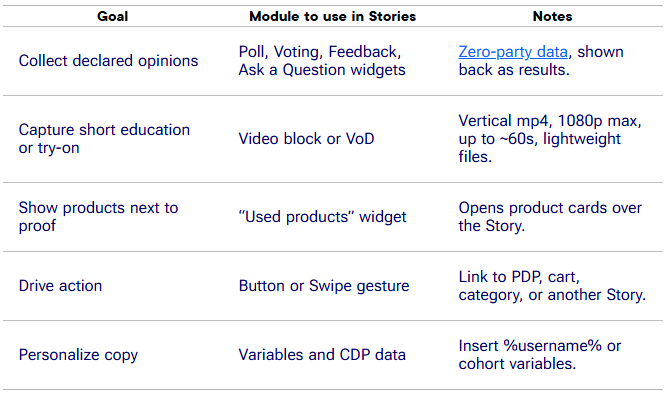
3) How do you prepare the app for in-app UGC formats?
Integrate the SDK and set up your workspace once. This is foundational. Do this once:
- Integrate the SDK for the platforms you ship, such as iOS, Android, Web, or React Native.
- Create a project in the console, set roles, and configure layout and feeds.
- Decide where the Story feed appears in the app, because placement influences conversion. Use feed settings and position control.
4) How do you collect UGC signals in a structured way?
Start with consent-based, in-app questions. Keep them short and contextual.
Practical sequence:
- Create a poll or voting slide that asks one clear question tied to a category or product.
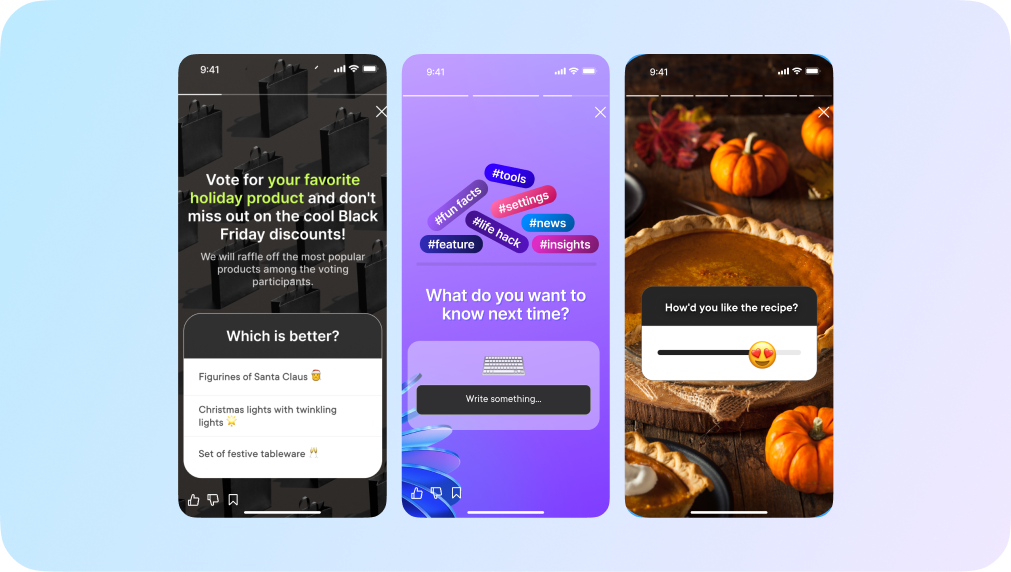
- If you need a free-text quote, use Ask a Question, then moderate and edit for clarity.
- For sentiment, add a 5-star “Rate us” or a feedback scale; route high scores to the store review, collect low scores inside the app.
- Use “Disable timer” on interactive slides so users complete the action before moving on.
5) How do you curate and republish influencer or creator videos in-app?
Keep clips short, vertical, and close to the product view.
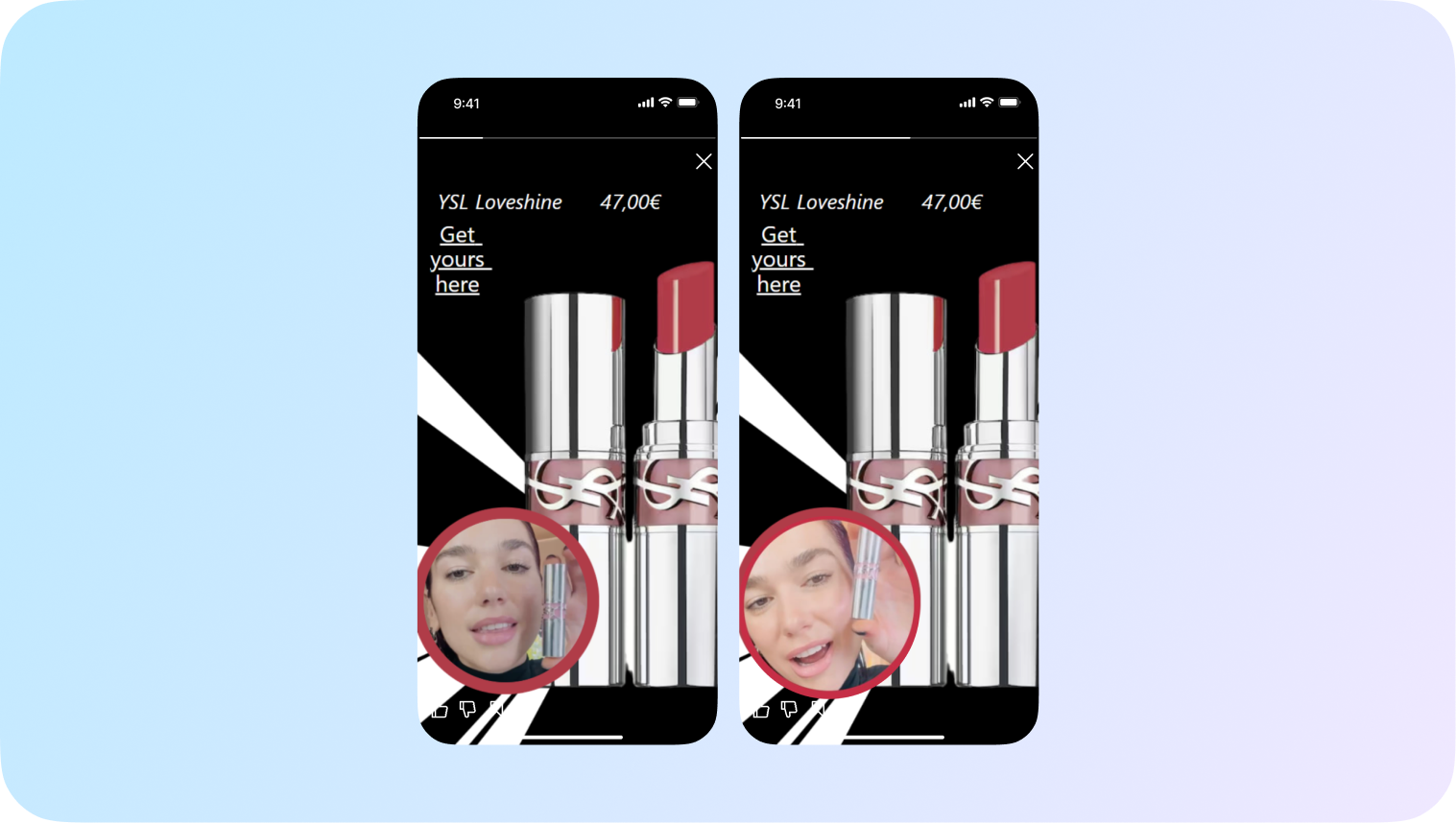
Checklist for creator clips:
- Trim to a concise segment that answers one question such as “what does it look like on skin”.
- Upload as a Video block or VoD if the clip is longer, respect file and duration recommendations for smooth playback.
- Add a caption that states the takeaway in one line, then place a Button that links to PDP or another Story.
- Keep one clip per slide, avoid stacking multiple videos on the same screen unless essential.
6) How do you turn raw inputs into “proof” next to the buy button?
Aggregate the most persuasive signals and present them where choices are made.
Two working patterns:
- “Community pick” slide
Create a slide that shows “Most chosen shade this week: Bronze, 62%”. Use poll results, then place the “Used products” widget so users can open the exact SKUs without leaving the Story. - “Real users say” slide
Pull one-line quotes collected via Ask a Question, keep the language natural, and place a button to view the item or add to cart.
7) How do you ensure the right users see the right UGC?
Target by tags, segments, or variables, and schedule for moments that matter:
- Add user tags from your app such as category affinity, then show the Story only to that cohort. You can also use logical expressions for advanced rules.
- Build segments like “saw Story A but did not open Story B”, then show the UGC proof to nudge the next step.
- Schedule availability by date and hours, and pin or prioritize key Stories to control their position in the feed.
8) How do you test and learn without shipping app updates?
Run content experiments in the console, then iterate on winners:
- Create up to several variants of the same Story and split traffic evenly. Compare reach, opens, reads, and click-through.
- Adjust copy, placement, or CTA based on the variant that moves “reads” to “clicks”.
- Use animated covers to boost open rates if the topic is competitive.
UGC as Zero-Party Data Collection
❌ Traditional reviews describe what customers thought in the past.
✅ Zero-party data, in contrast, captures what people want right now, because they willingly share preferences, needs, and intentions.
When collected in small, engaging steps, this data becomes one of the most trustworthy inputs for product and marketing teams.
The advantage is twofold:
- Users know they are actively contributing, which builds transparency and trust.
- Brands receive structured insights that can be acted on immediately, without relying on third-party tracking or assumptions.
Zero-party data works only when questions are specific and actionable. Examples include:
- “Which style do you prefer for summer?” (fashion retail)
- “Would you try our new vegan option?” (food delivery)
- “What topics should we cover in our next guide?” (fintech or edtech apps)
Each data type needs the right collection method:

Data is more persuasive when users see their input reflected. A few working patterns:
- Display live poll results as soon as voting closes.
- Create a highlight Story slide: “68% of our customers prefer bronze.”
- Combine votes into “community pick” banners or in-app messages.
How Different Industries Use UGC in Mobile Apps
The value of UGC changes across industries. A voting mechanic that works in food apps may not resonate in finance, while influencer clips that drive retail sales might inspire differently in travel. The table below summarizes practical workflows by industry.

Conclusion
UGC inside apps works as a live record of customer priorities. Every poll, highlight, or testimonial reflects what people value most in the moment of choice.
The strongest results come when UGC is built into the product as a steady layer of evidence. Not seasonal campaigns, not hidden review modules, but visible signals that frame decisions week after week. This approach turns engagement into a cycle: customers contribute, their input shapes what others see, and the loop reinforces both trust and retention.
Over time, brands that structure UGC this way create more than short-term lifts in clicks or orders. They establish a system of proof that continually informs strategy and strengthens loyalty.

